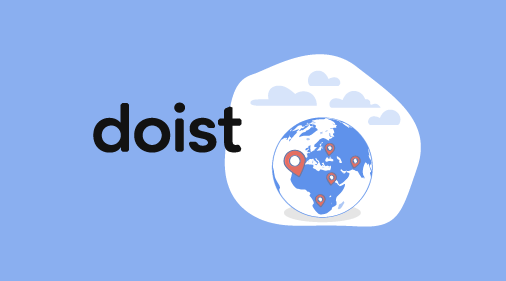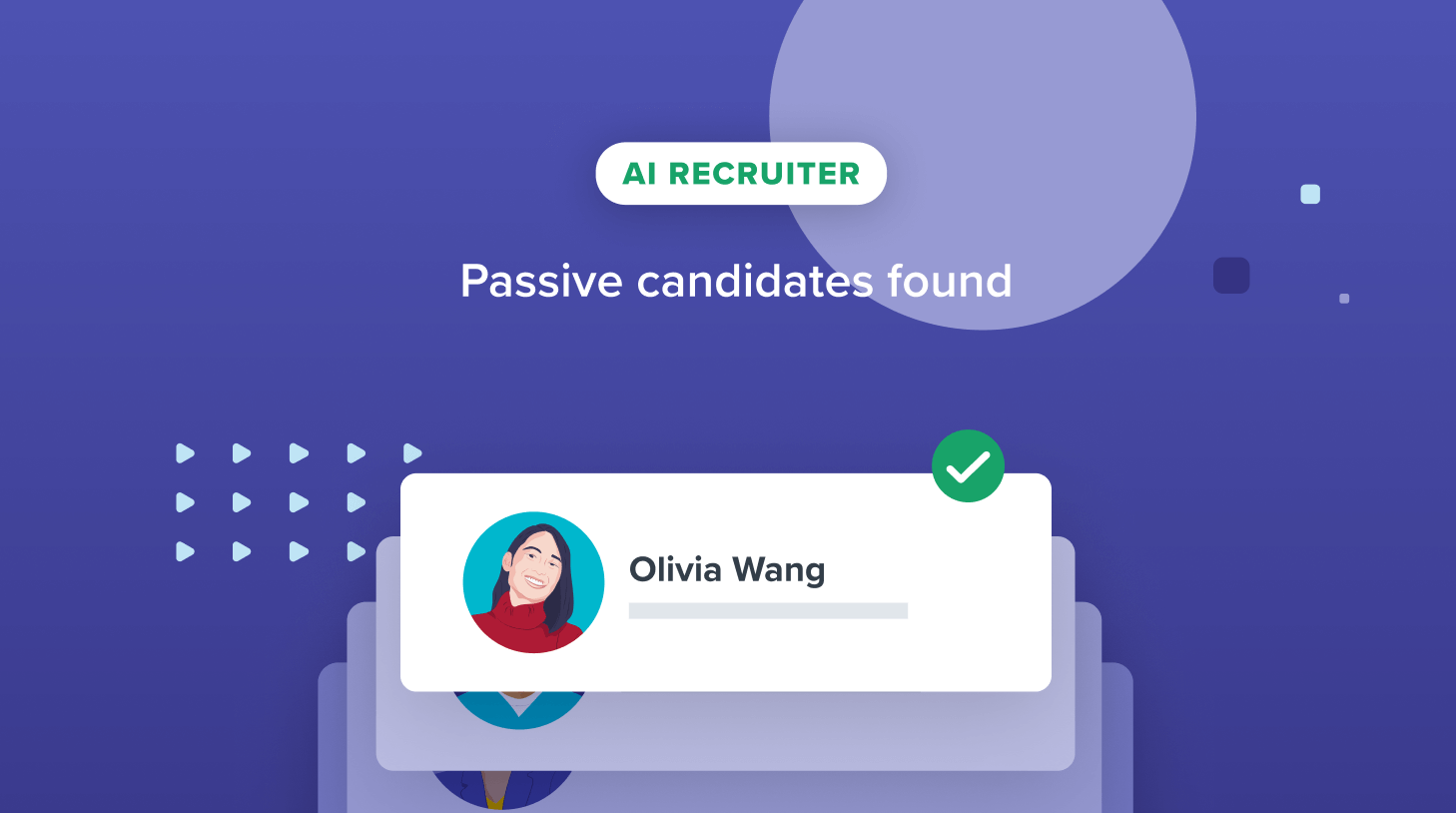Seven lessons from Doist on hiring remote employees

Imagine your workforce is so diverse your employees come from 26 countries. Getting applicants for your roles is never a problem—on an average, approximately 600 people apply per job opening. People like it there, so they tend to stay: your only turnover is three people over six and a half years—two who left to start their own businesses.
If these recruiting stats sound unbelievable—well, let’s put that to rest right now. They’re real. And Doist owns them. Doist is a startup that creates productivity software. They are also a remote-first company. This means:
- They rarely, if ever, meet candidates in person before hiring them.
- Their recruiting process is just as distributed as they are.
- They have no central office. Anyone can work from anywhere, as long as there’s a stable Internet connection.
So, how do they make hiring work? It’s actually not rocket science. They follow a meticulously structured hiring process. It’s one they are obsessive about it. Because, when it comes to extending a job offer, Doist doesn’t believe being half-hearted.
“There’s no lukewarm ‘yes,’ when we’re hiring a candidate” Allan Christensen, Doist’s COO told us. “It’s either a ‘hell yeah’ or a ‘no.’”
Doist has been using Workable to manage all aspects of their hiring since July 2016. Last year, the company received 13,700 applications for open roles. They shortlisted 1,400 candidates. They hired 18.
“We hired 0.1% of all the people who applied,” Christensen said.
We were fascinated by Doist when we heard their story. The company creates Todoist, a popular to-do list software, and Twist, a Slack competitor that promotes calmer, more organized team communication. Doist scaled 25 percent last year, from 48 employees to 60. We wanted to know how they did it. Here are their keys to success for hiring remote employees:
1. They have access to the entire world
Doist is remote-first. Being a remote-first company means they don’t need to look locally for talent. If you’re interested in working for Doist and you’re talented, it doesn’t matter where you’re based—as long as you’re “passionate about the project” as Christensen puts it.
Being completely remote allows Doist to recruit from literally anywhere. They use Workable’s job posting features to post their roles. (Workable offers single-click job posting to the most popular free and premium job boards, globally.)
“This is amazing,” Christensen said. “This gives us as a remote company access to the entire world.”
2. Everyone on the hiring team gets veto power
Hiring is a democratic process at Doist. That’s small ‘d.’ They believe in “hiring committees” of at least three people. One person shortlists candidates. The others offer tests and interview candidates. And, no matter what your title is at Doist, anyone can veto a hire within the process.
But of course there are checks-and-balances in place, Christensen said. For example, if he shortlists candidates during the screening phase, then he won’t participate in the following interview phase. This prevents one person from having too much power in the hiring process.
3. If you don’t have a cover letter, it’s a dealbreaker
U.S. companies tend to fixate on resumes, Christensen says. At Doist, they won’t even look at a resume unless it’s got a cover letter. Well-written cover letters show that candidates care about the mission of the company, not just the allure of a remote-work role.
“We want a well-crafted, tailored cover letter for this particular role that just radiates how much they want to be part of our mission and team,” he said. “We sort of see this as a bare minimum just to get shortlisted.”
They’ve questioned themselves a few times on this, because “we miss out on great candidates.”
“It makes it harder to find good developers sometimes, because they just seem to be less prone to write cover letters.”
4. They put candidates to the test
The second phase of the interview process is the “test task.” This task is directly related to the role the person is interviewing for. For a design or engineering role, Doist candidates usually undergo a 10-hour test task, and they’re paid for their time. For a translator or someone in support, it’s typically much shorter, around 15 to 20 minutes.
You might think—who has time to do this? But Doist fixates on quality of hire over time to hire. On average, it can take about two months to hire someone at Doist.
5. They measure ‘Doistness’
Doist aims to create a culture that other people yearn to be a part of. So, they actually screen for something they call “Doistness.” They’ve got it down to a science. Everyone on the hiring team evaluates candidates against four core values:
- Leadership
- Role-related knowledge
- Cognitive ability
- Doistness
The first three are self-explanatory. Doistness, Christensen said, is “how well you feel this person will fit into the culture.” Everyone on the hiring team will rate the candidate on a scale of one to four on each value. A candidate has to score an average of three in order to be hireable.
6. They have an opinion about the world of work
In some workplaces, those who shout the loudest get heard. But not so at Doist. Their communication is text-based and meetings are rare. Volume doesn’t matter. It doesn’t even exist.
“At Doist, the best argument always wins, no matter your job title,” Christensen says.
Doist also cares about productive communication. They used to use Slack for internal chat, but learned that it didn’t work for their needs as a remote-first company: it was distracting and it made people unhappy. So they created their own team communication software, called Twist, that was launched publicly in June of 2017.
As a company, they put just as much thought into how they treat their people:
Interns
If Doist hires an intern, they make sure interns are paid, and that they’ve got a job lined up for them after the internship ends. “Many of our interns are graduates that could go out and find a full-time job, but they were willing to do a six-month internship.”
Perks & benefits
They’ve also got some enviable perks. As Christensen puts it, “I usually tell people we’re an international company built on Scandinavian values. If you join Doist, there’s four months maternity leave, five weeks vacation and all the national holidays of the country in which you live.”
Company retreats
Doist also hosts companywide yearly retreats. At the first-ever retreat, employees tended to stick with other team members from the same country. But over time, and through familiarity they got more comfortable with each other. The retreats span a week, and include presentations, Q&As, team sessions, cross-functional brainstorming and workshops. But it’s not all work—Doist employees also do activities together, like rafting, paintball, soccer. “It’s a big investment, and it pays off bigtime.”
7. They ‘recruit as a team’
What’s Doist’s advice for remote recruiting?
“It’s definitely getting a second opinion,” he said. “Recruit as a team. Don’t recruit alone. It’s a huge benefit. It’s risky to have one person making all the hiring decisions. Take advantage of your team. And give everybody the power to veto.”




